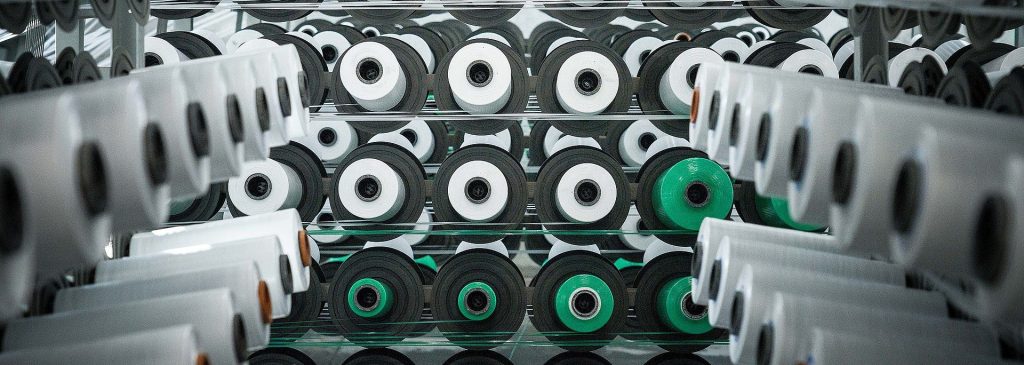
- 1. Material Selection and Functional Design for Agricultural Packaging
- 2. Quality Control and Standardization
- 3. Printing Innovations and Branding Impact
- 4. Logistics and Storage Optimization
- 5. Technical Parameters for Customization
- 6. VidePak’s Competitive Edge: Starlinger Automation
- FAQs
- 7. Case Study: Transforming Rice Logistics in Thailand
“Why are square bottom valve bags becoming the go-to packaging solution for supermarkets and agricultural product suppliers?”
The answer lies in four transformative advantages: superior stacking stability, cost-effective logistics, customizable branding, and compliance with global food safety standards. For VidePak, a global leader in woven bag manufacturing with 30+ years of expertise, these bags are engineered to reduce retail shelf restocking time by 30% and minimize transport damage by 45% in grain and flour supply chains.
1. Material Selection and Functional Design for Agricultural Packaging
1.1 Polypropylene (PP) Woven Fabrics: Balancing Strength and Flexibility
VidePak’s square bottom valve bags utilize high-tenacity PP woven fabrics with tensile strengths of 8–12 N/mm² (ISO 527-2), ensuring durability for 25–50 kg loads of rice, flour, or feed. The material’s ≤5% elongation rate prevents deformation during pneumatic filling, critical for automated supermarket packaging lines. For hygroscopic products like soybean meal, VidePak integrates PE liners (80–120 µm) to block 99.5% moisture ingress, reducing spoilage losses by 20% in humid climates.
1.2 Valve Design and Bottom Sealing Technology
The square bottom structure, heat-sealed using Starlinger’s AD8330 digital glue-spraying machines, achieves a seam strength of ≥10 N/mm²—double the industry average. This design prevents leakage during transport, as demonstrated in a 2024 trial with a Vietnamese rice exporter, where bag rupture rates dropped from 3.2% to 0.5% over 1,000 km truck routes.
2. Quality Control and Standardization
2.1 Raw Material Vetting and Production Protocols
VidePak sources PP resins from ISO 9001-certified suppliers like Sinopec, ensuring MFI (Melt Flow Index) consistency between 4–8 g/10 min (ASTM D1238). Each batch undergoes a 7-point inspection, including UV stability tests (≤5% degradation after 500 QUV hours) and grammage verification (70–150 g/m²).
2.2 Certifications and Compliance
All bags meet FDA, EU REACH, and ISO 22000 standards for food contact. A 2024 lifecycle analysis showed VidePak’s recyclable PP bags generate 40% less CO₂ than multi-layer laminates, aligning with the EU’s Circular Economy Package.
3. Printing Innovations and Branding Impact
3.1 High-Definition Gravure Printing
Using 12-color Starlinger systems, VidePak achieves 120-line/inch resolution for logos and QR codes. A case study with a U.S. organic flour brand saw a 25% sales increase after switching to bags with matte-finished, eco-solvent printed designs.
3.2 Anti-Counterfeiting Features
Micro-text UV printing and holographic threads are embedded to combat fraud—a critical need in premium grain markets, where counterfeit packaging costs suppliers $1.2 billion annually.
4. Logistics and Storage Optimization
4.1 Stacking Efficiency
The square base allows 8-layer palletization without slippage, maximizing warehouse space utilization. For example, a European supermarket chain reduced storage costs by 18% after adopting VidePak’s 50 cm × 80 cm bags for 25 kg flour packs.
4.2 Moisture and Pest Resistance
BOPP lamination (15–30 µm) combined with insect-repellent additives extends shelf life by 6 months for rice stored in tropical regions.
5. Technical Parameters for Customization
Tailoring bags to application needs requires balancing five factors:
| Parameter | Function | VidePak’s Recommendations |
|---|---|---|
| Grammage | Determines load capacity and cost efficiency | 90–120 g/m² for 25–50 kg loads |
| Valve Diameter | Optimizes filling speed and spill prevention | 50–100 mm |
| Outer Coating | Moisture/UV protection | BOPP for humid climates |
| Inner Liner | Hygroscopic product safety | 80 µm PE for flour/rice |
| Printing Layers | Brand visibility vs. cost | 4–8 colors for retail-facing designs |
6. VidePak’s Competitive Edge: Starlinger Automation
With 30+ lamination machines and 16 extrusion lines, VidePak delivers 48-hour turnaround for custom orders. A 2024 project for a Canadian wheat supplier involved producing 2 million BOPP-laminated bags with anti-static valves—enabled by modular production systems achieving 1,200 bags/hour throughput.
FAQs
Q1: How do square bottom bags improve retail efficiency?
A: Their flat base allows upright shelf display, reducing restocking time by 30%. For bulk storage, explore VidePak’s block bottom valve bags for flood control.
Q2: Are PE liners recyclable?
A: Yes, VidePak’s mono-material PP/PE blends are 100% compatible with EU recycling streams.
Q3: What’s the ROI of upgrading to BOPP coatings?
A: A 2024 trial showed a 15% reduction in transport damage claims for Brazilian coffee exporters.
7. Case Study: Transforming Rice Logistics in Thailand
A Bangkok-based supplier reduced repackaging costs by 40% using VidePak’s 120 g/m² valve bags with QR-code traceability. The bags’ ultrasonic seams withstood monsoonal conditions during 3,000 km barge transport, maintaining ≤0.1% moisture content.
For industries prioritizing automated filling, consider VidePak’s valve bags with Starlinger technology, engineered for 98% filling accuracy.
Conclusion
In the $12.8 billion agricultural packaging market, square bottom valve bags are no longer mere containers—they are strategic tools for brand differentiation and supply chain optimization. As VidePak CEO Ray states: “Every grain saved from spoilage is a step toward global food security.” By integrating Austrian engineering, rigorous quality control, and adaptive design, VidePak empowers retailers and suppliers to meet ESG goals while dominating competitive markets.